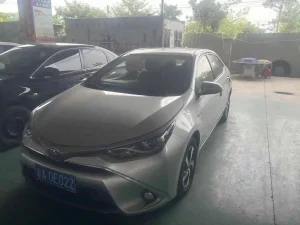Exporting China used cars involves sourcing the cars, compliance checks, logistics, and understanding international market demand. Before 2019, the used car export industry in China was a long way off, but in 2019, the Chinese government removed restrictions, and the number of exports started to increase. By 2023, the annual export volume is more than 200,0000 units. This figure is a clear indicator that the export industry is growing rapidly. According to industry analysts, the market may expand by 15% per year for the next five years, as more Chinese companies enter the export market. The source of the vehicles is the first step. Companies should find suitable cars that are of good quality and meet international standards. Usually, cars should be less than 5 years old and have low mileage, as they retain value better afterward in the foreign market. Many companies work with Chinese manufacturers and auction houses to build inventory stock. For example, more than 50% of China’s exports occur through export hubs like Guangzhou and Tianjin because these two cities have the most cars volume. Next, companies must ensure that cars meet local and destination countries’ regulations. destinations have different rules for importing vehicles.
Logistics After vehicles are sourced, surveyed and compliance is done. Whether the delivery process is still made via a Roll-on/Roll-off (Ro-Ro) vessel or despatched collectively by container shipment depends upon target and likewise volume connected with vehicles. Ro-Ro shipping: It is more cost effective for bulk exports and takes on average 20–45 days to ship depending upon the destination. It is more costly, but it provides better preservation and condition of the vehicle than roll on/roll off therefore used for higher value vehicles. That works out to perhaps $500-$1,500 per vehicle in shipping costs using surface methods.

And proper documentation being another important factor involved. A bill of lading, commercial invoice with made packing list and an export clearance is required. Second, and perhaps most importantly, is the inspection report which itself ensures that vehicles are fit to be exported. In China, the online platform to apply for export clearance is a step taken by the Chinese government in order to simplify obtaining documentation and reduce processing times by 30%.
It is of paramount importance that exporters also take into consideration the tastes and economic conditions prevailing in a target export market. That might be a reason why Toyota and Hondas are popular in African markets, for example (they can easily be serviced), or electric vehicles becoming more prevalent within Southeast Asia. Research in the market assists to recognize which are typically these vehicles those have better resale value and what type of cars is an extra effective you succeed in for a specific region.
The last part is accomplished by seeking out good local partners or distributors in the target market. We have also built relationships with dealerships and importers, which help in streamlining the sale process as well ensuring a navigate through local market dynamics. Autocango is one of the examples that will play a key role in distributing China used cars for export to more global markets as it has already signed some partners on-ground in several countries. Exporters who are interested in Chinese used vehicles as an international product may wish to quickly seize these opportunities through efficient logistics, best practices regarding compliance and local demand.